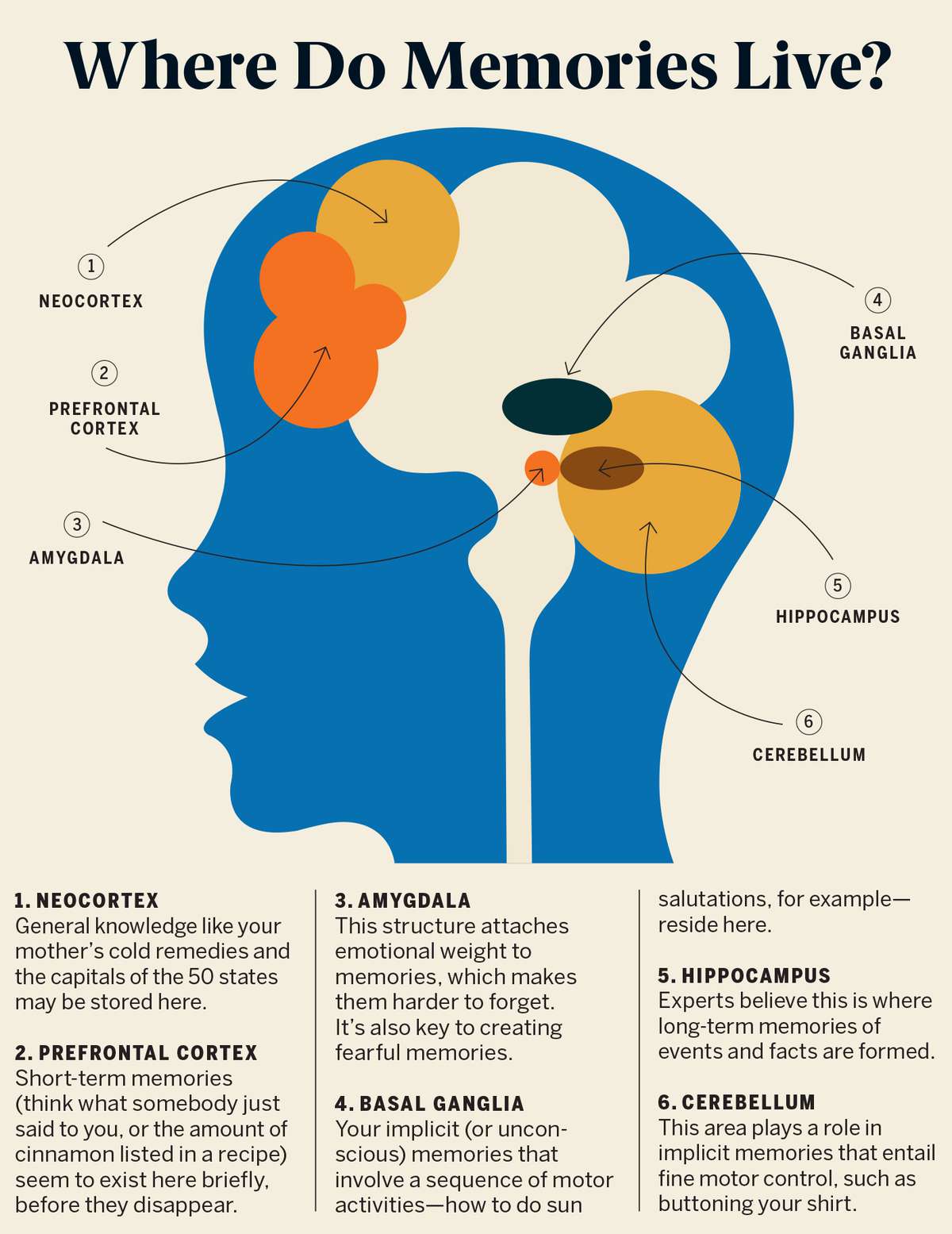The Science Behind Human Memory
Memories are not perfect recordings but rather reconstructions shaped by each retrieval. Our brain fills in gaps through a reconstructive process rather than replaying a memory as-is like a video recording. Let’s explore the science behind how our memory works and fails through six key aspects:
Memory is reconstructive
When we remember past events, our brain does not play back a perfect recording like a video. Instead, memory involves reconstructing the event based on traces left behind. This means gaps and blanks get filled in each time a memory surfaces. Over multiple retriellings, details change as the brain supplements and distorts memories without us realizing.

Details get distorted over time
The longer ago an event occurred, the more prone our recollection of it becomes to distortion. Regularly retrieved memories hold onto accuracy better as they remain fresh, while rarely accessed memories degrade faster. Minor details especially get altered or fabricated as time passes due to our brain unconsciously filling in details that were never actually present.
Context helps but also misleads
While context aids recall by triggering associated memories, it can also mislead recollections through false associations. For instance, remembering visiting a funeral home’s visitation room yet confabulating window details because they match another funeral home setting in memory. Context draws from related memories instead of perfectly replaying the original event.
Not all details get stored to begin with
Our brain does not faithfully record everything we see, hear, smell, feel and taste. It selectively encodes the most salient and meaningful aspects of an experience based on what we paid attention to. Thus subtle, insignificant, or unnoticed details often do not get encoded and consolidated into long-term memory.
Storage and retrieval are imperfect processes
Encoding a memory, storing it over time, and later retrieving it rely on different brain regions communicating effectively through neural pathways and synapses. However, flaws can arise during any stage due to biological limitations or interference. The capacity to intake, retain, and access memories over a lifetime far exceeds what our limited neurobiology allows.
Forgetting serves an adaptive function
While forgetting inconveniences us, it benefits our brain by freeing up resources and preventing overload. Forgetting inessential details allows memory capacity and processing power to focus on the most relevant recent information instead of meaningless past minutiae. Some degree of forgetting is necessary for adaptive, goal-directed remembering and functioning. In closing, human memory does not mirror objective reality through flawless storage and replay. Our reconstructive memory is shaped each time by the interplay between past encoded traces and present contextual influences, inevitably resulting in distortions, gaps, additions and other fallibilities over time. Though not a perfect information preservation system, memory has evolved to serve our adaptive needs through efficiency instead of absolute accuracy.
Priming aids recall but also misleads
Being primed or having hints about a past event can boost memory retrieval by stimulating associated concepts in our brain. However, priming can also lead to false recollections when hints cue fabricated details that get confusingly integrated into our recollection. Even subtle contextual manipulations during eyewitness interrogations risk contaminating memories.
Memories evolve with new learning
Our memory is not fixed or static, but changes as we continue learning and encountering new information. Fresh experiences have the power to reshape or reconsolidate older memories already stored in our brain as knowledge updates. While this enhances storage flexibility, it leaves past memories vulnerable to distortion from newly incorporated falsehoods as well.
Biases shape what memories surface
We do not perfectly or impartially remember all past experiences. Internal biases slant which memories become encoded, consolidated and easily retrieved later on. Factors like our emotions, beliefs, expectations and motivations influence which aspects of experiences receive more processing resources and thus become prioritized in memory.
False memories can form through suggestion
Studies show it is possible to implant entirely fabricated memories that people will confabulate vivid details to recall. Repeatedly exposing someone to misleading information or coercively interrogating them has the potential to create false memories that become integrated within their narrative of personal past experiences. Our reconstructive memory is highly malleable. In summary, while memory serves our survival by allowing lessons from the past to guide present decisions, its reconstructive nature introduces critical vulnerabilities as well. From inevitable distortions over time to vulnerabilities against external suggestions and internal biases, human memory cannot be treated as perfectly accurate historical recordings. An informed understanding of its fallibilities remains essential.
Social pressures influence shared recollections
Discussing past events with others who experienced them leads memories to blend and converge over time through social contagion. The desire for social cohesion biases recollections to align more with what our peers recall, especially for more ambiguous details, in order to strengthen group bonds. However, this malleability during collaborative remembering also risks propagating inaccuracies.
Emotional valence affects encoding and recall
Our brain differentially prioritizes emotionally arousing or significant experiences for preferential consolidation and easier future access. Though this enhances retention of survival-relevant information, it also injects vulnerabilities of inaccuracy since emotionally charged memories receive worse elaboration and contextualization during initial encoding compared to neutral ones.
Neurological fallibility underlies memory distortions
At the level of brain science, memory distortions ultimately stem from limitations in how our neurological system supports learning, retention and retrieval across the lifespan. From neural connections that degrade over time impairing sharp recall to biochemical or electrical fluctuations that interfere with optimal processing - our very biology constrains memory’s accuracy.
In conclusion, many factors rooted in cognitive, social and neurological mechanisms collectively shape human memory as an adaptive but fallible reconstructive process rather than a videotaped documentation of past objective experiences. While serving important functions, memory’s malleable nature introduces vulnerabilities that demand appreciation of its scientific basis and limitations when relying on recollections especially around high-stakes decisions. Overall recollections, even our own, cannot replace objective evidence and should be interpreted carefully.
